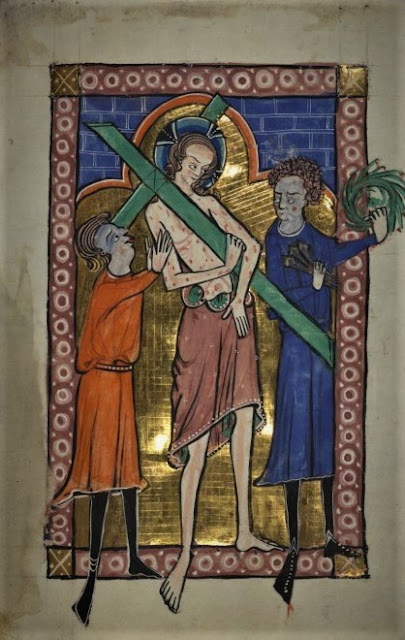St. Augustine was born in A.D. 354 in what is modern-day Algeria. His family was of some substance and highly respected. His father Patricius was a pagan, though he converted to Christianity on his deathbed. His mother St. Monica was a Christian and raised Augustine in the faith, though he was not baptized until he was an adult.
As a boy Augustine became conscious of sin in a special way when he participated in a pointless act of theft – an act which made a profound impression on him and he later wrote about and regretted it. He and some companions stole pears from a tree, not necessarily to eat, but just to steal for the fun of it. In his spiritual autobiography, the Confessions, he described the incident, and ended his account by writing, “Foul was the evil, and I loved it.”
When he was nineteen, Augustine began a long-term affair with a woman. We do not know her name, because Augustine deliberately didn’t record it. He never married her, but they did have a son. Despite his Christian upbringing, Augustine abandoned the Faith and became a Manichean, a gnostic sect, which crushed his mother.
So far it doesn’t sound much like the life of a saint, so how did he turn things around? He happened to take a position teaching rhetoric in Milan, Italy and, with the encouragement of his mother, began to have more contact with Christians and Christian literature, which brought him in contact with the great St. Ambrose, then the bishop of Milan.
One day, in the summer of 386, he heard a childlike voice chanting “Tolle, lege” (“Take, read”). He took this as a divine command and opened the Bible, randomly, to Romans 13:13-14, which reads: “Let us conduct ourselves becomingly as in the day, not in reveling and drunkenness, not in debauchery and licentiousness, not in quarreling and jealousy. But put on the Lord Jesus Christ, and make no provision for the flesh, to gratify its desires.”
Applying this to his own life, Augustine was cut to the heart, and his conversion began in earnest. He was baptized, along with his son Adeodatus, at the next Easter Vigil by St. Ambrose. A few short years later his mother Monica and his son Adeodatus both died. Augustine returned to him home in North Africa, where he was alone on the family property. He sold almost all his possessions and gave the money to the poor and he turned the family home into a monastery. In 391, he was ordained a priest of the diocese of Hippo. In 395, he became the city’s coadjutor bishop and then its bishop. As bishop, he wrote extensively, and the value of his writings was such that he became a Church Father.
This great Doctor of the Church spent over 30 years working on his treatise De Trinitate [about the Holy Trinity], endeavouring to conceive an intelligible explanation for the mystery of the Trinity.
Augustine was walking by the seashore one day contemplating and trying to understand the mystery of the Holy Trinity when he saw a small boy running back and forth from the water to a spot on the seashore. The boy was using a sea shell to carry the water from the ocean and place it into a small hole in the sand.
The Bishop of Hippo approached him and asked, “My boy, what are doing?”
“I am trying to bring all the sea into this hole,” the boy replied with a sweet smile.
“But that is impossible, my dear child, the hole cannot contain all that water” said Augustine.
The boy paused in his work, stood up, looked into the eyes of the Saint, and replied, “It is no more impossible than what you are trying to do – comprehend the immensity of the mystery of the Holy Trinity with your small intelligence.”
The Saint was absorbed by such a keen response from that child, and turned his eyes from him for a short while. When he glanced down to ask him something else, the boy had vanished.
Some say that it was an Angel sent by God to teach Augustine a lesson on pride in learning. Others affirm it was the Christ Child Himself who appeared to the Saint to remind him of the limits of human understanding before the great mysteries of our Faith.
Augustine died on August 28, 430. He was canonized by popular acclaim and was subsequently proclaimed to be one of the four original Doctors of the Church.
O Merciful Lord, who didst turn Saint Augustine from his sins to be a faithful Bishop and teacher: grant that we may follow him in penitence and godly discipline; till our restless hearts find their rest in thee; through Jesus Christ thy Son our Lord, who liveth and reigneth with thee, in the unity of the Holy Spirit, ever one God, world without end. Amen.
















